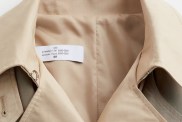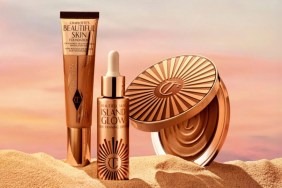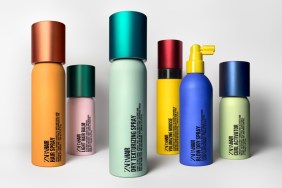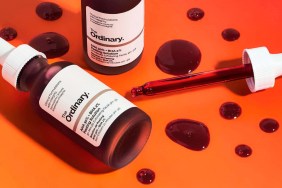Trying new skincare products can be scary. Not only is there a possibility the product won’t work, but there’s also a chance the product can cause mild or severe skin damage. While patch testing a new product on your arm can prevent a major breakout in the middle of your forehead, trying a new skincare treatment or procedure isn’t as easy.
One of the best ways to rid your skin of acne, hyperpigmentation, scarring, fine lines and wrinkles is a chemical peel. We understand if chemical peels elicit thoughts of skin melting off your face, so we’ve spoken to licensed medical esthetician Jordana Mattioli to find out everything you need to know about the treatment. Be aware that this is not a Groupon deal to indulge in as these things mean serious business.
theFashionSpot: What advice would you give someone looking to try a peel for the first time?
Jordana Mattioli: The most important thing is that they’re in experienced and recordable hands. I know a lot of hair salons and certain spas offer chemical peels, but being an esthetician for over 10 years and working all different types of the industry, I definitely know this is the type of thing you want to do with a medical spa or a dermatologist. You also want a very thorough consultation. You want all your questions answered, and you want to have your dermatologist or esthetician talk about your goals with your skin and what type of peel would be appropriate as well as meet expectations and results. You want more information than you’d probably think you’d ever want at your consultation.
tFS: What peel would you recommend for someone who has acne-prone skin?
JM: With acne-prone skin, normally what we recommend is beta hydroxy acid, and there’s only one, which is salicylic acid. It has certain advantages for oily or acne-prone skin because it reduces inflammation. Because salicylic acid is an acid that’s closely related to aspirin, it contains those aspirin-like properties, so irritation and inflammation are kept to a minimum. The other nice thing about salicylic acid is that it’s oil soluble, which means it’s a really good peeling agent for acne-prone skin because you’re usually dealing with a lot of oil. Skin types with rosacea are really good candidates for peels containing salicylic acid as well.
tFS: What if someone was looking to rid hyperpigmentation from acne?
JM: It would be a two-part treatment because if you still have active acne, then we’re going to treat you with salicylic acid. Once your acne clears up, and you’re only dealing with scarring, we’re going to treat you with different types of acids. Primarily, we would use a combination of TCA (trichloroacetic acid), which is really good for scarring and we’ll alternate that with a combination of alpha hydroxy acids that contain retinoic acid. Those are peels that you’ll have to have a physician order, so you’ll have to do it with your medical esthetician or a dermatologist. We’re going to treat scarring with a more aggressive approach as long as you don’t have any active acne.
tFS: What about dry skin?
JM: My go-to is usually lactic acid. It’s in the alpha hydroxy acid family. It’s nice because it’s a lot gentler than the rest of the acids, so it’s better for drier skin or sensitive skin. It’s a natural acid, so there’s less of an allergic reaction with it as well.
tFS: Should those with dark skin be concerned?
JM: Yes and no. With darker skin (African-American skin, Asian skin, certain Mediterranean skin types, depending on how much pigment you have), the superficial peel you don’t have to be concerned with. About 90 percent of chemical peels are going to be superficial, so there shouldn’t be any issues with darker skin types. You have to be more concerned with some of the deeper peels, which we normally don’t recommend for darker skin, or it’s more along the lines of we take it slow. If the patient has a history of pigmentation whether it be hypopigmentation, hyperpigmentation, keloiding, then those are definitely causes of concern and we would stick with the superficial peels.
tFS: What about receiving a peel on the back or chest?
JM: Certain acids can be transdermal, which means some of it will end up in your bloodstream, so because of that we limit the area we apply the peel. For example, the amount of peel that can be put on someone’s face and neck is your maximum limit, so we would never do your whole back in one treatment. Instead, we would do a third of the back. You can do your chest in one treatment, but that wouldn’t mean we would do your face and neck also because it’s too much acid, and your body’s healing time gets compromised when it has a lot to deal with.
tFS: Can you explain the different peels that are available?
JM: The different peels that are available are almost infinite. There’s lots of different acids and a lot of different combinations of peels, which is nice because it helps customize peels to different skin concerns. There’s different peels as far as strength goes as well. The main difference would be superficial peels, which are no downtime peels, and medium-depth peels, which include stronger acids for specific skincare issues and have more peeling time. You have a lot of options. For example, there’s a peel that I can do on a bride the day before her wedding that’ll make her skin look great. There’s also a peel that you’re not going to want to leave the house for a week.
tFS: What results should someone expect?
JM: We do what we refer to as a series. For instance, if we’re trying to treat acne scarring, we might recommend somewhere between four and six peels done at about a month apart. If we’re treating someone who just has some very light sun damage, maybe we’ll just do two or three peels a month apart. If you’re doing a light superficial peel, you’re going to have awesome-looking skin right away. You won’t have any visible peeling or flaking. After the first couple days the microscopic skin sheds, you’ll notice a brighter complexion and better texture. It’s going to help with fine lines, but it’s a gradual period. For a deeper peel, you should expect a little bit of redness and sometimes you can get a tiny bit of swelling, but it’s usually not aggressive. Usually in about three to four days the skin starts flaking and that can last up to a week. In both instances, the skin looks great and continues to improve week after week for about three or four weeks. When you’re dealing with deep wrinkles and acne scars, collagen stimulation isn’t something that happens overnight, which is why we have to wait until your skin slowly heals and see the results before we administer another peel.
tFS: How should someone care for their skin while it’s peeling?
JM: That’s something your dermatologist or medical esthetician will go over with you. Everyone’s slightly different, but it’s important to use a gentle cleanser and a gentle lotion, or serum that doesn’t have any active ingredients in it. You’re going to stay away from all of those things you would normally use containing retinol or vitamin C or alpha hydroxy acids. You want to keep it really bland and boring for the week that your skin is peeling. The most important thing you can do is to wear a sunscreen even if it’s cloudy outside. With chemical peels, you are removing that superficial layer of skin, so it’s really important to protect it from the sun. The only time I’ve ever seen any bad or negative responses from a peel is when a patient hasn’t worn sunscreen religiously afterward. Your skin will be so sensitive for a few weeks, so you want to protect your investment and your skin.
tFS: Are there any side effects?
JM: You’re really just looking at whether a patient has an allergy to a particular ingredient, which isn’t that common with chemical peels. For instance, if someone is allergic to aspirin, I’ll stay away from anything containing salicylic acid. The other caution would be we can’t use certain ingredients during pregnancy or breastfeeding and that’s anything containing vitamin A or salicylic acid, so we’ll stick to lighter peels, including glycolic or lactic acids. With deeper peels, you get increased complications. They’re not as popular because if someone has a history of cold sores, for example, they can have a flare-up with a deeper peel. A lot of times deeper peels are being replaced with laser devices because they’re a little safer regarding complications like scarring, or any type of infection, so it’s really important we understand the patient’s skin.
tFS: Are there any unrealistic expectations?
JM: Chemical peels aren’t going to remove or reduce blood vessels or capillaries on the skin. They’re not going to affect any type of raised scarring, so if someone has keloid scarring, they’re not going to remove it. They also don’t work as a face lift, but they will make your skin smoother, they will fade brown spots, it could help uneven skin tone from sun damage, it could make your skin look fresher and younger, and it’s something you can do on a regular basis.








